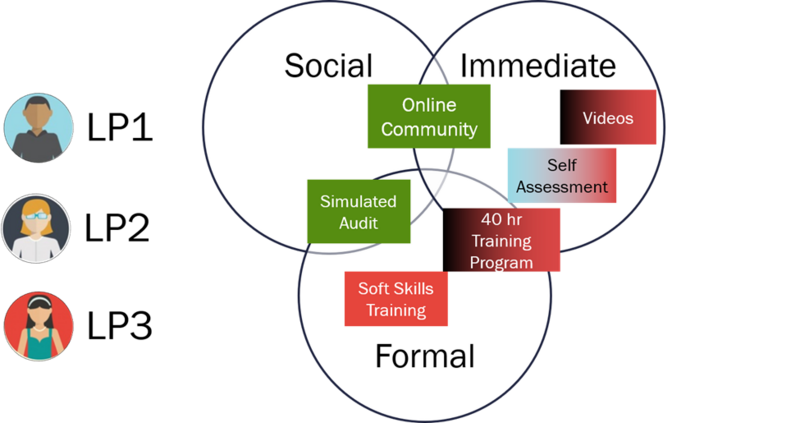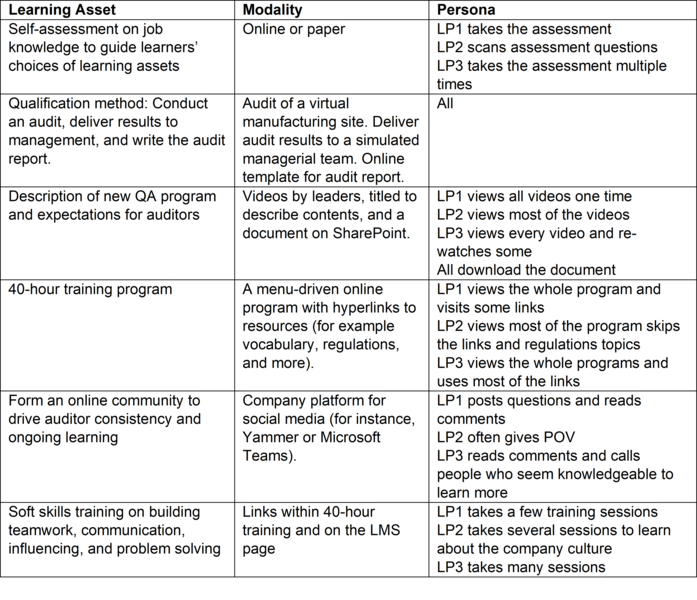ATD Blog
It's Not Peanut Butter Training
Tue Oct 20 2020

Some years ago, I was brought into a C-suite meeting to hear about the next training program the leaders wanted. This discussion was different from most. The CEO said, “I don’t want peanut butter training.” Quizzical looks ensued. “You know, the kind of training that is spread like peanut butter on bread from edge to edge, across everyone, whether they need it or not.”
In today’s digital age, our training can be more targeted. If we break apart our massive, agglomerated target audience into several learner personas, we can provide people with learning assets that are pertinent to them, in their context, and in their moments of learning need. That’s how to get started on designing a learning cluster for modern learning.
Target audience descriptions are compilations of demographics that are common to the learners who will be taking the training. The description helps us design for the average learner. However, learners aren’t averages—especially in our increasingly diverse and inclusive workplace. Here’s an example of a group of learners who are being trained to implement a new quality assurance program:
Target audience: 250 quality assurance (QA) auditors who have been with the company for five to 20 years, work in manufacturing sites, and have a college education.
Learner Persona 1 (70 percent of target learners)
College educated (four to six years)
10 to 20 years with company
New to QA
Typically transferred from line manager or the engineering group
Learner Persona 2 (10 percent of target learners)
College educated (four years)
One to five years with company
Hired into the QA role
Familiar with QA (either by degree or experience)
Learner Persona 3 (20 percent of target learners)
Technical education (technical school or two-year associate degree)
10-20 years with company
New to QA
Transferred from the laboratory
If we use the peanut butter approach to training, we will create a program that’s focused on persona 1 and a standard target audience description. In this scenario, persona 2 would have to sit through basic QA training that they could probably teach, and persona 3 would likely be intimidated by the language, expectations, and responsibilities.
A better method would be to create a learning cluster of assets to train people in this new role. This allows us to teach them only what they don’t already know, and provide additional resources to those who need it.
Here’s one of many forms that this learning cluster could take, all of which is stored in the LMS or on a dedicated website.


The Benefits
A learning cluster can deliver benefits that peanut butter training isn’t designed to provide. A learning cluster can save learners time by focusing on what they don’t know, not on what they already know. It can drive learner engagement by allowing them self-direction. Learning clusters can also improve knowledge retention by using spaced learning and smaller learning bites. And designing a learning cluster can actually be easier for instructional designers because we no longer have to squeeze so much content into one learning asset. We can even deploy training faster by designing the most critical learning assets first and adding assets over time and as new learning needs emerge.
Using Learner Personas Where You Work
Think of the differences among learners in your target audiences. How can you use these differences to define your primary learner personas and deliver learning assets when, where, and how they need to learn. Here’s a few idea starters:
Where are learners when they want or need to learn? At home? On public transportation during a commute? In their workspace? In an area designated for learning that is away from distractions?
When will learners need to learn? Before meeting customers, teammates, or clients? When they run into problems? In a time-critical situation? When something changes?
How do learners need to learn? On devices? In a safe, simulated environment? In writing or online with lots of notes? With videos? In face-to-face classes? From peers or experts?
Let’s stop designing one-size-fits-all peanut butter training. Let’s start designing learning clusters with assets that meet the needs of our learner personas.
